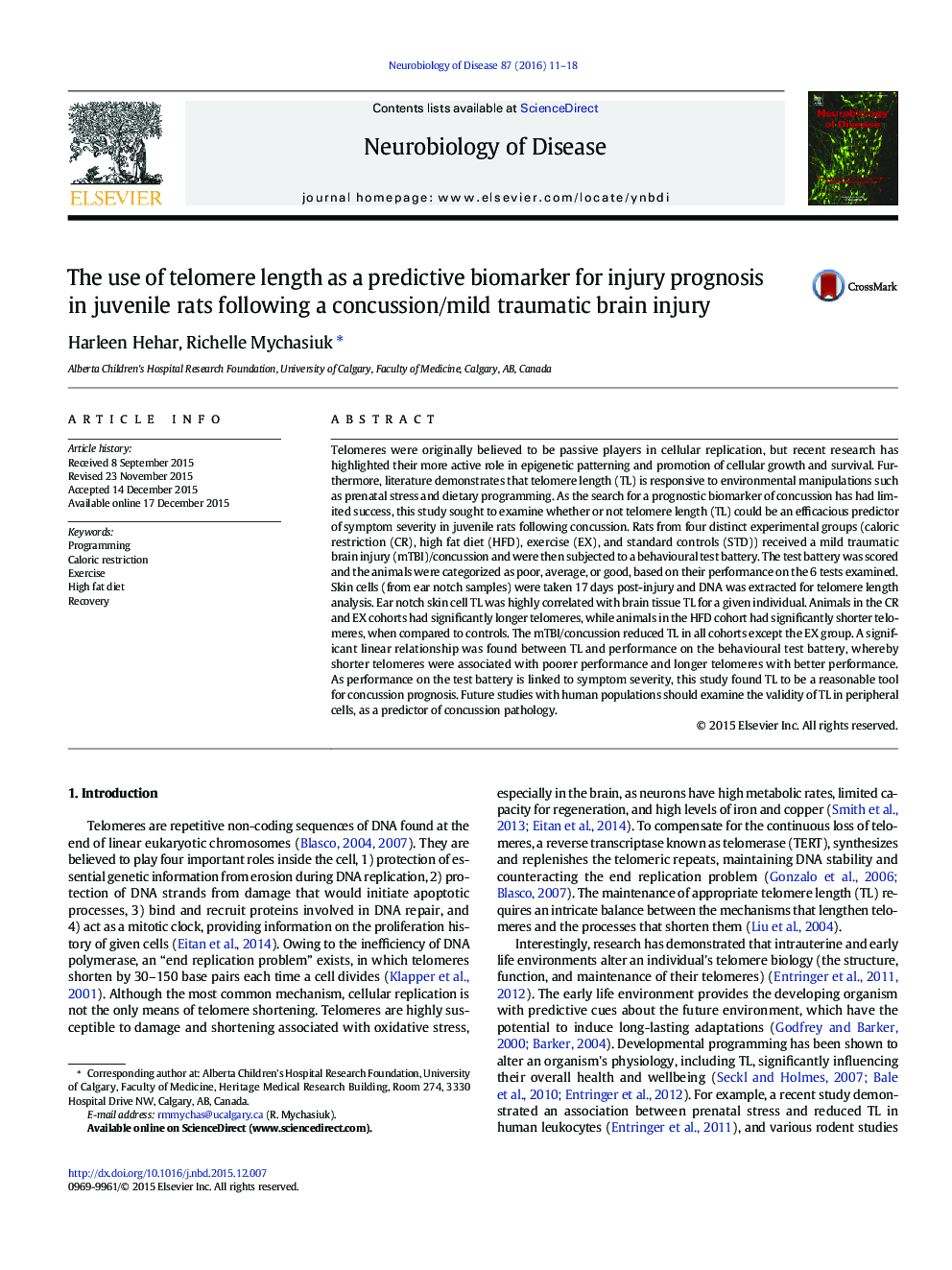| کد مقاله | کد نشریه | سال انتشار | مقاله انگلیسی | نسخه تمام متن |
|---|---|---|---|---|
| 6021499 | 1580636 | 2016 | 8 صفحه PDF | دانلود رایگان |
- Telomeres play a significant role in longevity and disease pathology.
- Daily habits and dietary intake have been shown to influence telomere length.
- Telomere length is reduced in response to mild traumatic brain injury/concussion.
- Behavioural performance pre- and post-injury was predicted by telomere length.
- Telomere length may be a valuable tool for concussion prognosis.
Telomeres were originally believed to be passive players in cellular replication, but recent research has highlighted their more active role in epigenetic patterning and promotion of cellular growth and survival. Furthermore, literature demonstrates that telomere length (TL) is responsive to environmental manipulations such as prenatal stress and dietary programming. As the search for a prognostic biomarker of concussion has had limited success, this study sought to examine whether or not telomere length (TL) could be an efficacious predictor of symptom severity in juvenile rats following concussion. Rats from four distinct experimental groups (caloric restriction (CR), high fat diet (HFD), exercise (EX), and standard controls (STD)) received a mild traumatic brain injury (mTBI)/concussion and were then subjected to a behavioural test battery. The test battery was scored and the animals were categorized as poor, average, or good, based on their performance on the 6 tests examined. Skin cells (from ear notch samples) were taken 17Â days post-injury and DNA was extracted for telomere length analysis. Ear notch skin cell TL was highly correlated with brain tissue TL for a given individual. Animals in the CR and EX cohorts had significantly longer telomeres, while animals in the HFD cohort had significantly shorter telomeres, when compared to controls. The mTBI/concussion reduced TL in all cohorts except the EX group. A significant linear relationship was found between TL and performance on the behavioural test battery, whereby shorter telomeres were associated with poorer performance and longer telomeres with better performance. As performance on the test battery is linked to symptom severity, this study found TL to be a reasonable tool for concussion prognosis. Future studies with human populations should examine the validity of TL in peripheral cells, as a predictor of concussion pathology.
Journal: Neurobiology of Disease - Volume 87, March 2016, Pages 11-18
